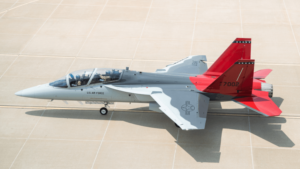AUSTIN, Texas — As artificial intelligence becomes increasingly integrated into a number of industries, organizational leaders from the public and private sector are considering both the opportunities and risk posed by this rapidly evolving field of technology.
During a March 12 South by Southwest Conference panel in Austin, tech enthusiasts from the U.S. Army and industry discussed how advances in AI-augmented humans and humanoids — non-human entities, such as robots, that possess human characteristics — have the potential to reshape how humans work and accomplish complex tasks.
The panelists additionally discussed the importance of pursuing responsible AI, so that the new technology will serve to improve human lives and abilities.
“AI is not a panacea,” said Army Futures Command Director of Integration Col. Troy Denomy, who participated in the panel. Denomy clarified that AI can be a useful tool in optimizing the capabilities of humans and machines but is not a replacement for human brainpower or skill. He added that the Army does not want to create situations in which humans are working for robots but rather seeks to enable robots to work for humans.
To better understand the advantages AI can offer, the Army is evaluating new AI assistance methods through its Soldier-centered design model, which places Soldier participation and feedback at the core of experimentation efforts. The method takes inspiration from private industry best practices shaped around ensuring end-user satisfaction, such as Microsoft’s human-centered design methods.
Panelist Steven Bathiche, who leads Microsoft’s Applied Sciences Group, highlighted how AI developers are shifting away from remote-controlled programming toward task-based programming, which allows humans to complete more complicated tasks by automating the repetitive ones. Bathiche commented on the Army’s historical ability to enable greater innovation and problem-solving in emerging fields of technology through mutually beneficial partnerships with entrepreneurs and industry.
Fellow speaker Young Bang, who serves as Principal Deputy Assistant Secretary of the Army for Acquisition, Logistics and Technology, emphasized that interfaces with technology must evolve alongside the technology itself, so that analysts and Soldiers can more easily and intuitively interact with AI systems. Carefully assessing risk is also critical, and the Army continues to apply frameworks to identify and counteract risks, including when adopting third-party generated algorithms. The Army also plans — with the help of industry — to deepen its understanding of how integrating new AI capabilities may impact Soldiers’ well-being and behaviors, with an aim of improving personal, professional and operational outcomes.
“It’s about innovation and failing quickly. We don’t want programs that last 10 years and then decide to kill it. We want to learn faster and faster from our mistakes,” Bang said.
By Army Futures Command
This entry was posted
on Friday, March 22nd, 2024 at 00:00 and is filed under AI / ML, Army, Guest Post.
You can follow any responses to this entry through the RSS 2.0 feed.
You can skip to the end and leave a response. Pinging is currently not allowed.



